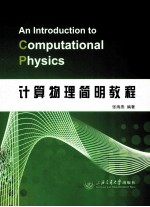
- 作 者:张海燕编著
- 出 版 社:上海交通大学出版社
- 出版年份:2010
- ISBN:9787313066688
- 标注页数:259 页
- PDF页数:40526706 页
请阅读订购服务说明与试读!
订购服务说明
1、本站所有的书默认都是PDF格式,该格式图书只能阅读和打印,不能再次编辑。
2、除分上下册或者多册的情况下,一般PDF页数一定要大于标注页数才建议下单购买。【本资源40526706 ≥259页】
图书下载及付费说明
1、所有的电子图书为PDF格式,支持电脑、手机、平板等各类电子设备阅读;可以任意拷贝文件到不同的阅读设备里进行阅读。
2、电子图书在提交订单后一般半小时内处理完成,最晚48小时内处理完成。(非工作日购买会延迟)
3、所有的电子图书都是原书直接扫描方式制作而成。
1 Approximations,Errors and the Taylor Series 1
1.1 Approximations and Errors 2
1.1.1 Approximations 2
1.1.2 Round-off Errors 4
1.1.3 Principles to Hold During the Numerical Calculations 5
1.2 Truncation Errors and the Taylor Series 7
1.2.1 Truncation Errors 7
1.2.2 The Taylor Series 8
1.2.3 Some Techniques in Numerical Computation 11
1.3 Control of Total Numerical Error 12
1.3.1 Truncation Error 12
1.3.2 Total Numerical Error 13
1.3.3 Control of Numerical Errors 14
1.4 Problems for Chapter 1 15
1.5 Computer Work for Chapter 1 16
2 Interpolation and Finite Differences 18
2.1 Finite Difference 20
2.2 Newton Interpolation 21
2.2.1 Basis Functions 22
2.2.2 Newton Interpolation 23
2.2.3 Newton’s Divided-difference Interpolating Polynomial 25
2.2.4 Errors of Newton Interpolation 28
2.3 Interpolation Formulae 30
2.3.1 NGF Interpolation 30
2.3.2 NGB Interpolation 31
2.3.3 ST Interpolation 31
2.4 Difference Quotients 32
2.4.1 DNGF Formulae 33
2.4.2 DNGB Formulae 34
2.4.3 DST Formulae 35
2.5 Problems for Chapter 2 38
2.6 Computer Work for Chapter 2 39
3 Numerical Integration 41
3.1 Numerical Integration Methods 41
3.2 Newton-Cotes Quadrature Rules 43
3.2.1 The Trapezoid Rule 44
3.2.2 Simpson’s Rule 45
3.2.3 Error Estimation 47
3.3 Composite and Adaptive Quadrature 50
3.3.1 Composite Quadrature Rules 50
3.3.2 Automatic and Adaptive Quadrature 55
3.4 Numerical Integration of Multi-dimensional Integrals 58
3.5 Problems for Chapter 3 61
3.6 Computer Work for Chapter 3 62
4 Matrix Algebra 63
4.1 Types of Matrices 64
4.2 Gauss Elimination and Back Substitution 66
4.2.1 The Elimination of Unknowns 66
4.2.2 The Algorithm of Gauss Elimination and Back Substitution 67
4.2.3 Techniques for Improving Solutions 72
4.3 LU Decomposition and Matrix Inversion 74
4.3.1 Overview of LU Decomposition 74
4.3.2 LU Decomposition Algorithm 76
4.3.3 Procedure from Gauss Elimination 79
4.3.4 The Matrix Inverse and Error Analysis 83
4.4 Tridiagonal Matrices and Recursion Method 85
4.4.1 Tri-diagonal Systems 86
4.4.2 Recursion Method 89
4.5 Iterative Methods 92
4.6 Jacobi Method 95
4.6.1 The Algorithm 95
4.6.2 The Convergency 96
4.7 Gauss-Seidel Method(GS) 97
4.7.1 The Algorithm 97
4.7.2 The Convergency 99
4.8 Successive Over-Relaxation Method(SOR) 99
4.9 Conjugate Gradient Method(CG) 102
4.9.1 The Gradient 104
4.9.2 Steepest Descent Method 107
4.9.3 CG Method 109
4.10 Problems for Chapter 4 115
4.11 Computer Work for Chapter 4 116
5 Ordinary Differential Equations 118
5.1 Types of Differential Equations 119
5.2 Euler Method 122
5.2.1 Error Analysis 124
5.2.2 Stability 126
5.2.3 Application to Vector Equations 130
5.3 The Leapfrog Methods 131
5.3.1 Stability Analysis 132
5.3.2 Generalization to Multi-step Scheme 133
5.4 Implicit Methods 135
5.4.1 The Most Fundamental Scheme 135
5.4.2 Implicit Scheme of Second Order——Improved Euler Method 138
5.5 The Runge-Kutta Method 140
5.5.1 The Basic Idea of Runge-Kutta Method 140
5.5.2 Stability Analysis 143
5.5.3 Adaptive RK Method 146
5.6 Predictor-Corrector(PC)Method 149
5.7 Boundary Value Problems and Initial Value Problems of Second Order 156
5.7.1 Shooting Method 158
5.7.2 Numerov’s Method 164
5.8 Problems for Chapter 5 166
5.9 Computer Work for Chapter 5 167
6 Partial Differential Equations 168
6.1 Types of Equations 168
6.2 Elliptic Equations 170
6.2.1 Two or More Dimensions 172
6.2.2 ADI(alternating direction implicit)Method 177
6.3 Hyperbolic Equations 181
6.3.1 The FTCS Scheme 184
6.3.2 The Lax Scheme 186
6.3.3 Leapfrog Scheme 189
6.4 Parabolic Equations 191
6.4.1 A Simple Method——FTCS Scheme 192
6.4.2 Implicit Scheme of First Order 195
6.4.3 Crank-Nicholson(CN)Scheme 197
6.5 Five-point Stencil for 2D Poisson Equation in Electromagnetic Field 200
6.6 Problems for Chapter 6 206
6.7 Computer Work for Chapter 6 207
7 Monte Carlo Methods and Simulation 208
7.1 Probability 210
7.1.1 Chance and Probability 210
7.1.2 A One-dimensional Random Walk 211
7.1.3 Probability Distribution 213
7.1.4 Random Variables 215
7.2 Random Number Generators 217
7.2.1 Linear Gongruential Generators 218
7.2.2 Shift Register Generators 220
7.3 Non-uniform Probability Distribution 222
7.3.1 Inverse Transform Method 222
7.3.2 Generalized Transformation Method——Box-Muller Technique 225
7.4 Monte Carlo Integration 227
7.4.1 Splash Method(Hit or Miss Method) 227
7.4.2 Sample Mean Method 229
7.4.3 Two Theorems in Probability Theory 230
7.4.4 MC Error Analysis 231
7.4.5 Importance Sampling Technique 236
7.5 Stochastic Dynamics 239
7.5.1 Random Sequences 239
7.5.2 Stochastic Dynamics 242
7.6 Monte Carlo Simulation and Ising Model 246
7.6.1 Simulation Methods 246
7.6.2 Random Walk Methods 248
7.6.3 The Ising Model 249
7.6.4 The Metropolis Algorithm 252
7.7 Problems for Chapter 7 256
7.8 Computer Work for Chapter 7 257
Bibliography 259
